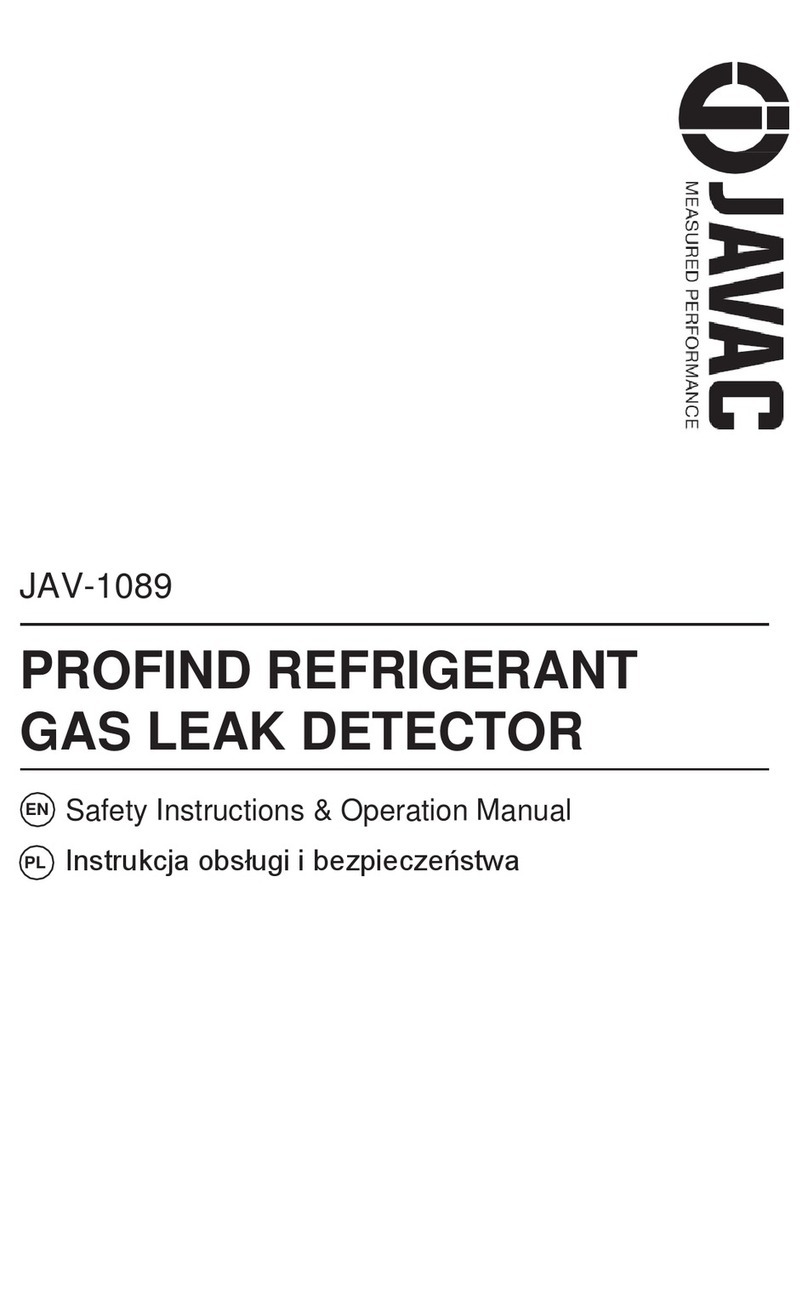
1 | EU Declaration of Conformity JAVAC
3 / 21074-710-P21-B JAVAC D-TEK 3 Operating Manual
1 EU Declaration of Conformity
EU DECLARATION OF CONFORMITY
This declaration is issued under the sole responsibility of the manufacturer INFICON. The object of the declaration is
to certify that this equipment, designed and manufactured by:
INFICON Inc.
Two Technology Place
East Syracuse, NY 13057
USA
is in conformity with the relevant Community harmonization legislation. It has been constructed in accordance with
good engineering practice in safety matters in force in the Community and does not endanger the safety of persons,
domestic animals or property when properly installed and maintained and used in applications for which it was made.
D-TEK 3 Refrigerant Leak Detector
721-20x-Gxx
2014/35/EU
2014/30/EU
Equipment Description:
Model Number:
Applicable Directives:
Applicable Standards:
Safety:
2011/65/EU
2006/66/EC
EN 61010-1:2010
(Applicable to all Group numbers)
Low Voltage Directive (LVD)
General Electromagnetic Compatibility (EMC)
as amended by 2015/863/EU RoHS
as amended by 2013/56/EU Battery Directive
Part 1: General Requirements: Safety
requirements for electrical equipment for
measurement, control, and laboratory use.
EN 62133:2013 Safety requirements for portable sealed
secondary cells and for batteries made from
them, for use in portable applications. CB Test
Cert DK-73443-UL
UL 2054 UL Standard for Safety Household and
Commercial Batteries Cert 20180518-MH29443
UL 60950-1 & CAN/CSA-C22.2 No. 60950-1-07
UL Standard for Safety Information Technology
Equipment –Safety –Part 1: General
Requirements Cert 20180518-MH294
UN 38.3 UN Manual of Tests and Criteria, Part III, sub-
section 38.3. Safe Transport of Li-Ion
Rechargeable Battery
Emissions: EN 61326-1:2013 Edition 2.0 (Radiated, Conducted & Harmonic
Emissions) (EMC- Measurement, Control &
Laboratory Equipment)
CISPR 11/EN 55011:2009 (+A1:2010)
Immunity: EN 61326-1:2013
Emission standard for industrial, scientific, and
medical (ISM) radio RF equipment, Class A
Edition 2.0 (EMC – Measurement, Control &
Laboratory Equipment) Immunity per Table A.1 –
Portable Test and Measurement Equipment
RoHS
CE Implementation Date:
Compliant
April 20, 2020
EU Authorized Representative
INFICON GmbH
50968 Köln, Bonner Str. 498
Authorized Representative:
Brian King
INFICON
General Manager – Service Tools
Two Technology Place
East Syracuse, NY USA 13057
ANY QUESTIONS RELATIVE TO THIS DECLARATION OR TO THE SAFETY OF INFICON'S PRODUCTS SHOULD BE DIRECTED, IN WRITING, TO THE AUTHORIZED
REPRESENTATIVE AT THE ABOVE ADDRESS.




























